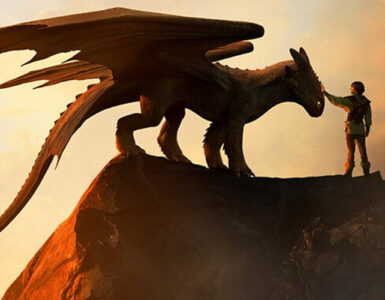Never bet against James Cameron.
Because he’ll take what he knows about writing strong characters, developing a strong story, making audiences care about new characters, beautify it with visuals that make other CGI-laden films look like final-year school projects, and impress you in such a way where you won’t know what’s been missing in a good movie, until he cues it up for you.
Avatar: The Way of Water is the long-awaited sequel to his megahit Avatar from 2009 and just as how he effortlessly created a whole new story, visual effects and universe then, he has given audiences a reason to revisit Pandora once more.
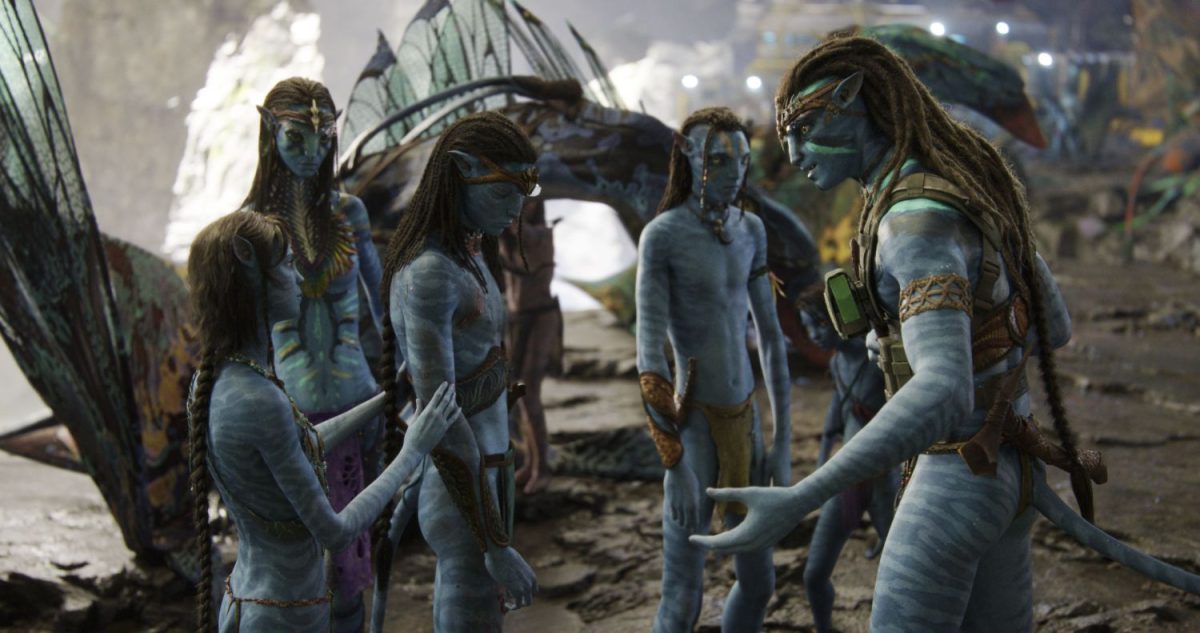
World building is a challenging effort as it is, and many times, there’s a lack of conviction by writers to invest fully but here, the 68-year-old director dives right into the sequel of mankind’s plunder of an alien planet, where humans can transfer their minds in the form of alien avatars, to seek out new life and destroy new civilisations. Have you seen the billion-grossing original multiple times in the last decade but don’t really remember much of the story? Cameron doesn’t waste time with recaps or exposition but establishes that after Jake Sully (Sam Worthington) succeeds in helping Neytiri (Zoe Saldaña) and the Na’vi repel humans from pillaging their planet, they start a family and have four children – their oldest son, Neteyam (Jamie Flatters), second son Lo’ak (Britain Dalton), youngest daughter Tuktirey or Tuk (Trinity Jo-Li Bliss), and adopted daughter Kiri (Sigourney Weaver).

Kiri is the mysterious daughter of Dr. Grace Augustine from the original, who sacrificed her life for the Na’vi. The identity of her father, and even how she was conceived is kept a secret in this sequel, as are some other narrative elements, as the team filmed two sequels back to back, with the second one due in 2024.
When mankind returns to Pandora, the Sullys have to move, and hide out among the Metkayina, a water Na’vi tribe, led by Tonowari (Cliff Curtis) and his wife, Ronal (Kate Winslet). The story itself is a simple one, as almost all of Cameron’s previous movies, from the first two Terminators, Aliens, True Lies, Titanic and Avatar, is about someone running away from somebody chasing them, and bad things ensue.
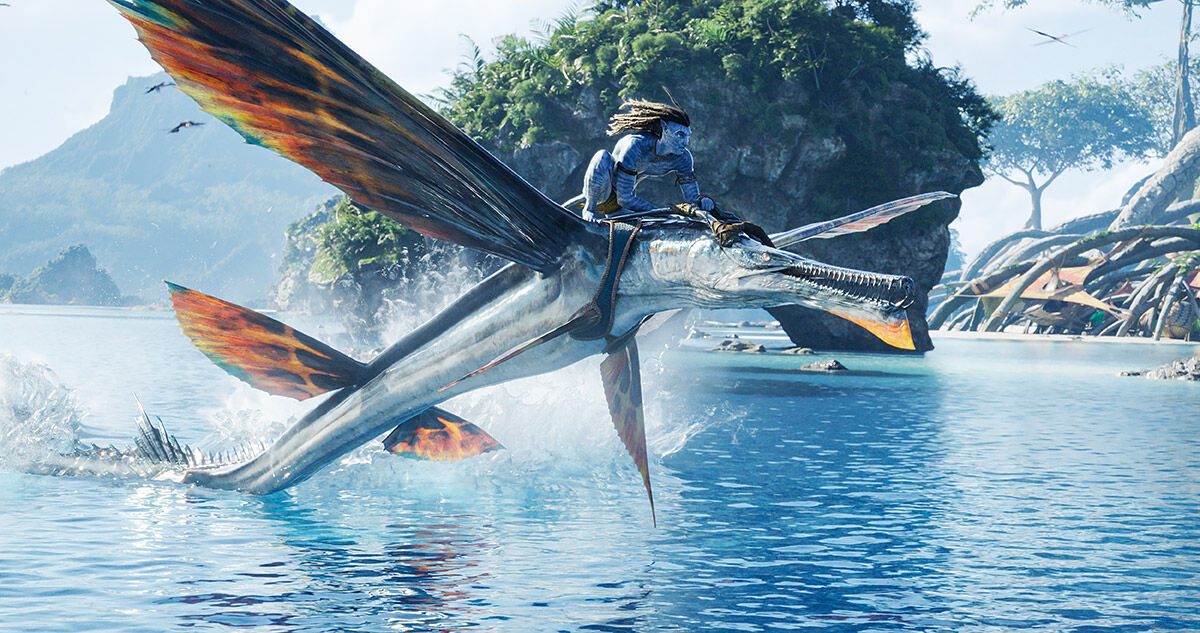
His magic is in making audiences care, such that we forget that his movies revolve around the same premise. In less than an hour, he expertly focuses on multiple characters, and makes us invest in their future because we expect that down the line, some won’t make it to the end, and we were not wrong. He builds tension among the Na’vi and the humans who remained on the planet, and among the Sullys. After defending the planet, the elder Sullys simply want to protect their family and this is a drastic change for Neytiri, who fought valiantly for her people but can no longer do so.
In seeking refuge with the Metkayina, the movie slowly unfolds the dynamics amongst the siblings and spends time on each of them, though the uneven balance foreshadows events to come. And by the time the conflict escalates, audiences will start caring for these new faces, as if we’ve followed their journey for the last 13 years, which we technically haven’t.
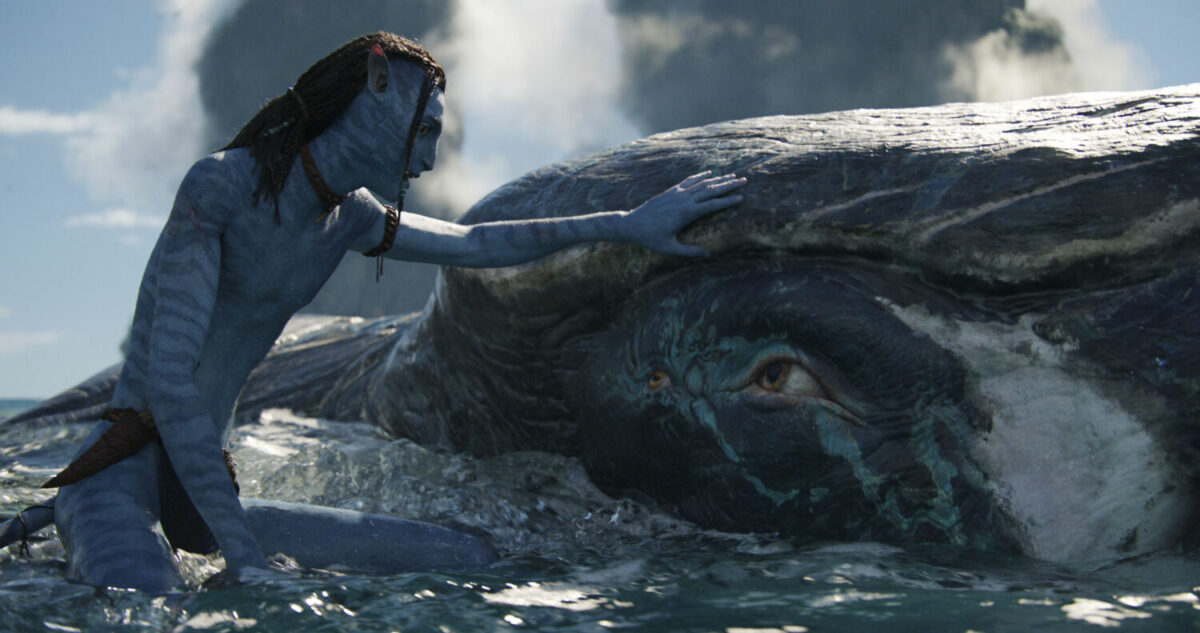
Even with the 192-minute run time, there really isn’t enough time to establish the back stories of each character, and that’s because Cameron spends as much time delving into the culture of the new Na’vi tribes, introducing new creatures and encounters, and building a connection with them. That’s where the beauty of his cinematography and visual effects really help sell his dream of a fully realised visual spectacle that puts all out big budget special effects movies to shame.
The oceans of Pandora come alive in a way that no movie has come before, and when they all dive into the vast oceans of the planet, and swim with the native underwater wildlife, you feel as if you’re watching a nature documentary. Underwater plants ebb and sway in a gentle yet firm way as objects swim across the screen, while water sloshes with determined purpose, and even with schools of fishes, there seems to be a premeditated journey mapped out for each of them. The calmness and rigours of moving underwater are masterfully recreated and while filming was done underwater, the combination of alien floral and fauna, together with the action makes the world seem so much more believable.

Let’s put it this way – the teaser trailer of Disney’s live-action The Little Mermaid was shown right before the movie, and the difference in underwater depiction is akin to watching special effects on Star Trek: The Next Generation versus Star Trek: Strange New Worlds, where things are supposed to be somewhat similar, but yet look so different.
Compared to the original, there are a lot less humans appearing on screen and it’s telling when those who do seem less expressive than the Na’vi aliens, and this includes the Marines, some who have returned in Na’vi form as Recombinants, including Stephen Lang as the diabolical and revenge-seeking Colonel Miles Quaritch.
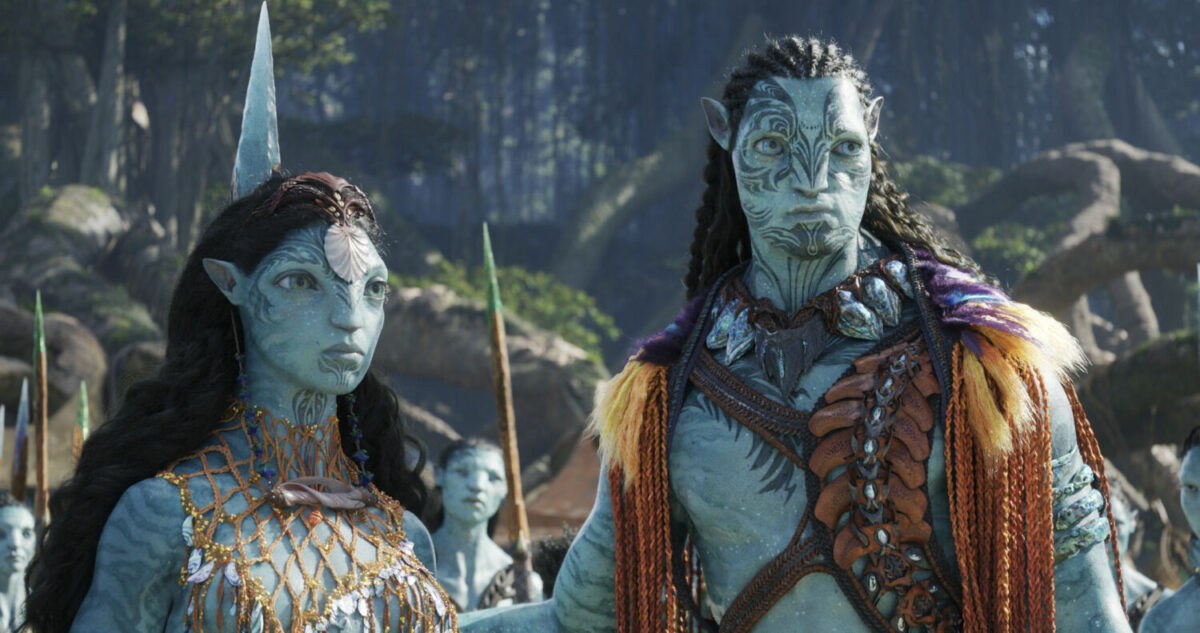
Within the lengthy run time, some might feel that too much time was spent on world building, and some of the Dances with Wolves bits, of time spent underwater and cultivating the world building can be cut but nowhere in the entire movie did it feel like parts were being dragged out. There is a purpose to showing the sealife on Pandora, just as there is a point in some of the mindless deaths in the final act.
And with any endeavour this huge, there are some questionable gaps, some which can be forgiven, while others seem too convenient, and we’re not even talking about Kiri. For example, Miles “Spider” Socorro (Jack Champion) is introduced as Quaritch’s son who didn’t return to Earth, but remained on Pandora. Since when did the military man have time to woo, date and knock someone up, while invading the natives? And after rallying his new waterborne tribe to bear arms against the humans, they all magically depart from the battle soon after, leaving the Sullys to wage a one-family war on their own.
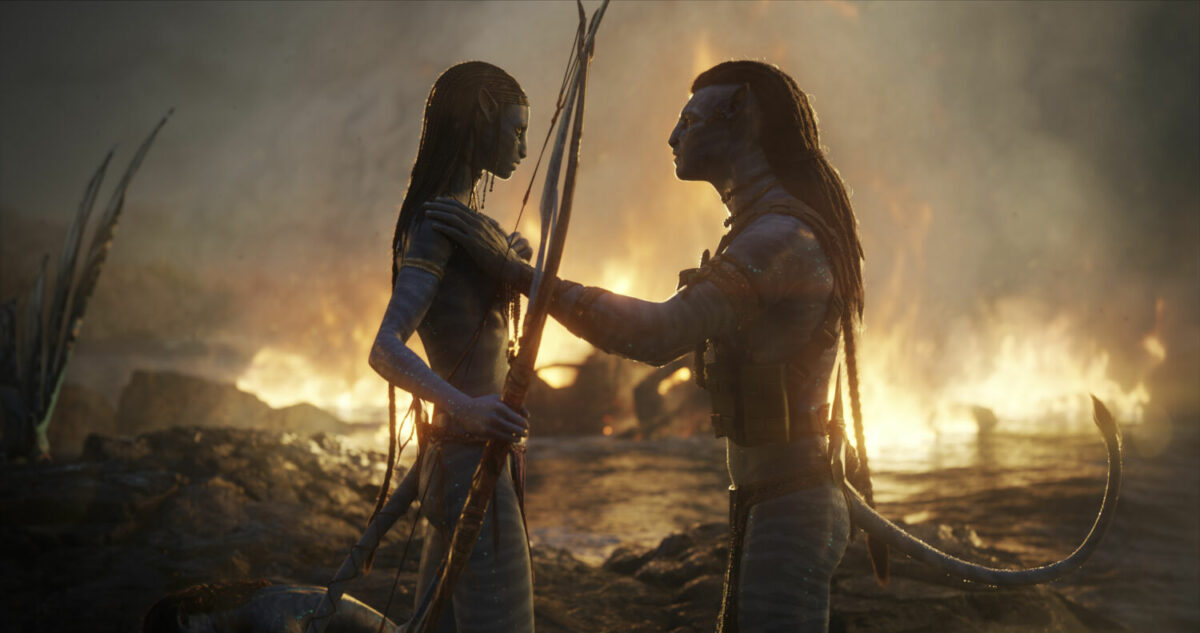
I see you Cameron, trying to gloss over some details, but as big budget spectacles go, the minor hiccups here are still far superior in form, structure and tone than some full blown movies released in the last decade.
And for those who worry about the 3D presentation – we caught the film on an IMAX with Laser hall, and the flawless projection and details of the ocean, forests, along with the sheer spectacle of this movie’s effects will make this a must-see for movie fans. 3D was made to show off a master at work and the visuals here are worth several prices of admission.
In many ways, Avatar: The Way of Water is a much deeper, intense and rousing spectacle than the original, and while the topics of exploitation and invasion ring loud, the movie is more immersive because these are topics that resonate with us, and Cameron still manages to tell a great visual story with something as old as time.
GEEK REVIEW SCORE
Summary
Cameron is the master of sequels, and especially when it’s a sequel for his own film. Avatar: The Way of Water is the visual thrill-ride of the decade, and the reason why movies need to be enjoyed on the big screen.
Overall
9/10
-
Story - 8/10
8/10
-
Direction - 10/10
10/10
-
Characterisation - 8.5/10
8.5/10
-
Geek Satisfaction - 9.5/10
9.5/10



